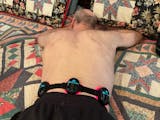Improving Orthodontic Treatment Efficiency through Photobiomodulation Therapy
Orthodontic therapy focuses on aligning crooked teeth and jaws, typically requiring extensive procedures for optimal results. Yet, advancements in photobiomodulation therapy (PBMT) present a hopeful opportunity to expedite these treatments, potentially shortening duration and enhancing patient results. This piece examines the use of PBMT in orthodontic care, investigating its efficacy and impact on the industry.
Understanding Photobiomodulation Therapy (PBMT)
Photobiomodulation therapy, commonly referred to as low-level laser therapy (LLLT), utilizes low-energy lasers or light-emitting diodes (LEDs) to activate cellular functions. PBMT is well-known for its ability to stimulate and regenerate cells, leading to improved differentiation, growth, and function of cells essential for tissue and bone regeneration. This feature positions PBMT as a beneficial resource in medical and dental fields, especially in expediting the natural processes involved in orthodontic tooth adjustment.
The Clinical Study on PBMT and Orthodontic Movement
A comprehensive randomized controlled trial was conducted to examine the effects of PBMT on orthodontic tooth movement in six patients necessitating extractive orthodontic treatment for ectopic canines. The research involved a total of eight canines, with half undergoing laser treatment (experimental group) and the other half acting as controls (placebo group).
After a 14-day period following the extraction, both groups had their canines distalized at the same time and in a symmetrical manner using the laceback retraction technique. The PBMT protocol involved four rounds of laser applications given on days 0, 3, 7, and 14, with each session lasting 2-4 minutes.
Key Findings
Upon one-month follow-up, a notable variance in distal displacement rate was observed between the irradiated and non-irradiated canines. Canines subjected to irradiation displayed an average displacement of 1.98 mm, while those in the control group showed 1.35 mm. The variance was statistically significant (p < 0.05), suggesting that PBMT notably hastened the orthodontic movement of canines.
Mechanisms Behind PBMT's Effectiveness
The efficacy of PBMT in accelerating orthodontic tooth movement can be attributed to several underlying mechanisms:
Enhanced Cellular Activity: PBMT promotes the growth and maturation of osteoblasts and osteoclasts, which play a vital role in bone restructuring throughout orthodontic therapy.
Increased Blood Flow: The therapy boosts enhanced blood circulation, providing necessary nutrients and oxygen to the treated area, thereby accelerating tissue repair and remodeling.
Reduced Inflammation: PBMT possesses anti-inflammatory properties that help alleviate pain and inflammation, creating a conducive environment for optimal healing.
Clinical Implications and Future Directions
The results of this research highlight the promise of PBMT as a beneficial supplementary therapy in orthodontics. By speeding up tooth movement, PBMT has the ability to shorten the total length of orthodontic treatment, ultimately increasing patient contentment and adherence. Moreover, the anti-inflammatory advantages of PBMT may result in decreased pain and discomfort, ultimately enhancing the overall treatment process.
Integrating PBMT into Orthodontic Practice
Orthodontic professionals must have a comprehensive knowledge of the correct laser settings and treatment procedures in order to successfully incorporate PBMT into their daily practice. Ongoing education and training in PBMT can help practitioners utilize this technology to its full potential.
Conclusion
Photobiomodulation therapy is a major breakthrough in orthodontics, providing a scientifically proven way to improve the speed of tooth movement. As orthodontics progresses, integrating PBMT into regular practice offers the potential for quicker treatment and better patient results. For individuals looking for advanced orthodontic options, PBMT offers a valuable tool for achieving the best possible outcomes.
















Share:
Innovative Solutions for Anterior Knee Pain in Athletes: The Role of Red Light Therapy
What Is the Best Pain Relief for Rheumatoid Arthritis?